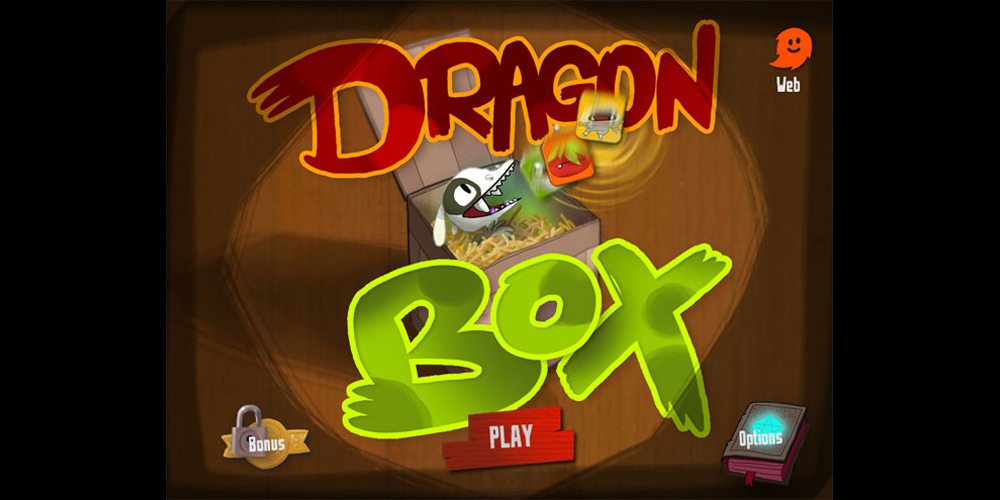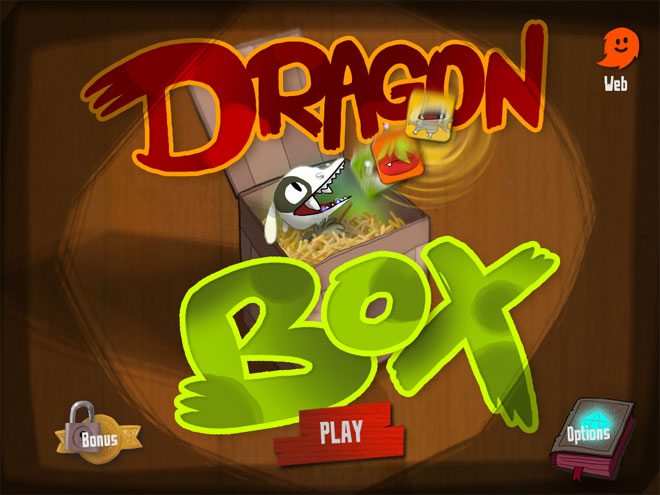All right, kids! Raise your hand if you like algebra! Hmmm. Now, raise your hands if you like Angry Birds! I see. What if I were to tell you that Angry Birds had been surpassed in the App Store — by a game that involves solving algebra equations? Because that’s what DragonBox did.
Do I have your attention now?
Well, okay, I should clarify: when DragonBox pre-launched in Norway, where it was developed, it shot up the charts and became the #1 most purchased app in Norway. I honestly don’t know how many Norwegians play Angry Birds (though apparently it’s still a lot). But that doesn’t make DragonBox‘s accomplishment anything to scoff at. More importantly, the app works.
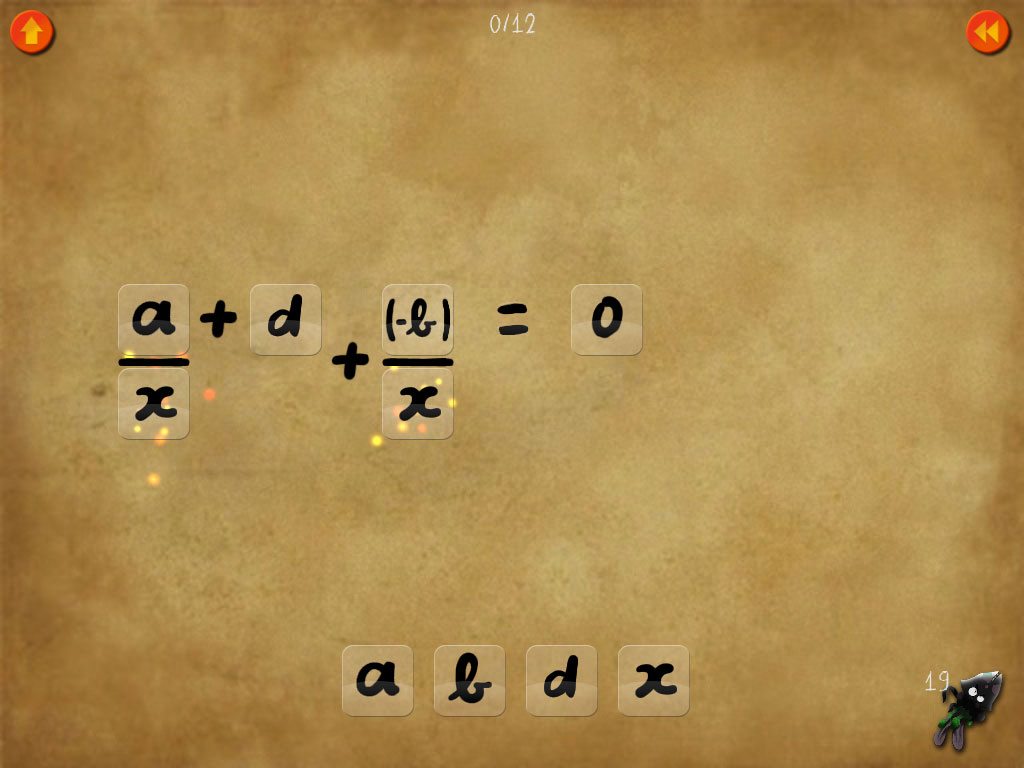
Within a couple hours, most kids playing DragonBox will be able to start solving simple algebraic equations, and what’s more, they’ll be having fun and they may not even know they’re learning algebra at first. Also surprising is that they don’t even need to know basic arithmetic to play the game. I showed DragonBox to my five-year-old and she loved it, and didn’t even want me to play ahead because she wanted to be the one to unlock all the levels.
So, how does a relatively unknown company from Norway make algebra so fun and easy to learn that my kids fight over who gets to play it? Read on and I’ll tell you.
[DragonBox is available for $2.99 for iOS and Android devices, and there’s also a Mac version. DragonBox+ includes 100 additional equations for extra practice for $5.99: iOS, Android, Mac.]


First, a bit about how DragonBox actually works.
There are five “worlds,” each with twenty levels, and as you progress through the levels the “dragons” hatch and grow into their full-sized versions. While this in itself has nothing to do with algebra, I mention this because my kids love this. It’s a very tiny incentive (along with earning stars) but they really want to beat the next level to watch the dragon grow into its next form. I was told that the dragons were all drawn by a fourteen-year-old girl, and they’re a lot of fun. (They aren’t all typical dragons — One starts off more like a fish, one looks like a squid, and so on.)

You are presented with a big screen with two trays, each containing a number of “cards” with different images on it. Somewhere on the screen there will be a little box with a star on it, sparkling and glowing. The app gives very minimal instructions in a hand-written font with arrows pointing to relevant spots on the screen, but it tells you to get the box by itself. At first you do this simply by tapping the green spirally cards, which vanish when you tap them. Then, you’ll start to get some “night” versions of cards — drag these onto the “day” versions and they become green swirls, which you already know how to handle.
After you’ve gotten past several levels of moving cards around and tapping on swirls, you’ll get a few cards down at the bottom which you can drag onto the trays — but whenever you drag a card onto one side, you have to also drag a copy to the other side as well. (This, of course, simulates adding the same number to both sides.) And then, a few levels on, you learn that you can flip these extra cards from day to night (and vice versa) before dragging them onto the trays.
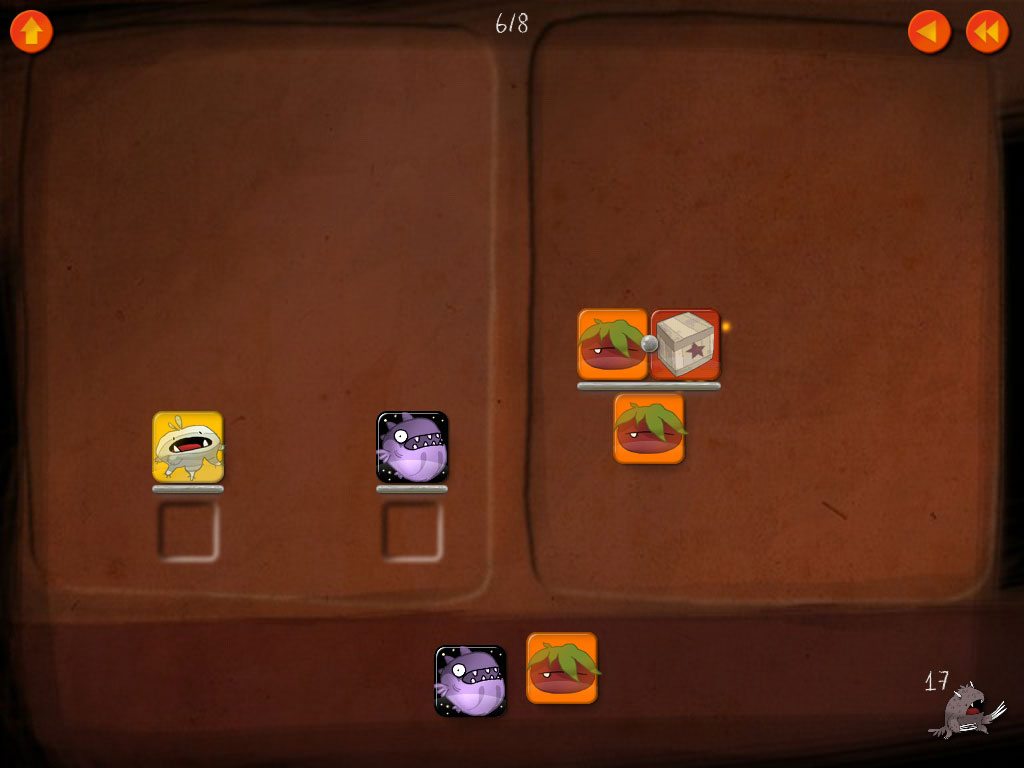
As the game progresses, you’ll start seeing cards that are above and below each other, with a bar in the middle — and you’ll learn to cancel these out by dragging one onto the other, which then turns into a one-dot. And you’ll learn that a one-dot vanishes when you drag it onto a card it’s attached to (with a little grey dot between them). These, of course, are fractions — multiplication and division — but you don’t need to know that to play the game, either.
Some other funny things happen, too. Sometimes there’s no box, but there is a little white square with an “x” on it, and it’s sparkling. So you isolate the “x.” Sometimes instead of weird little creatures there are letters on the cards like “c” or “b” and sometimes there are things that look like dice, white squares with some number of dots on them.

Once you get to World 3, the cards are no longer scattered willy-nilly in the two trays, but are arranged in a line, with plus signs between them and an equals sign between the two trays.
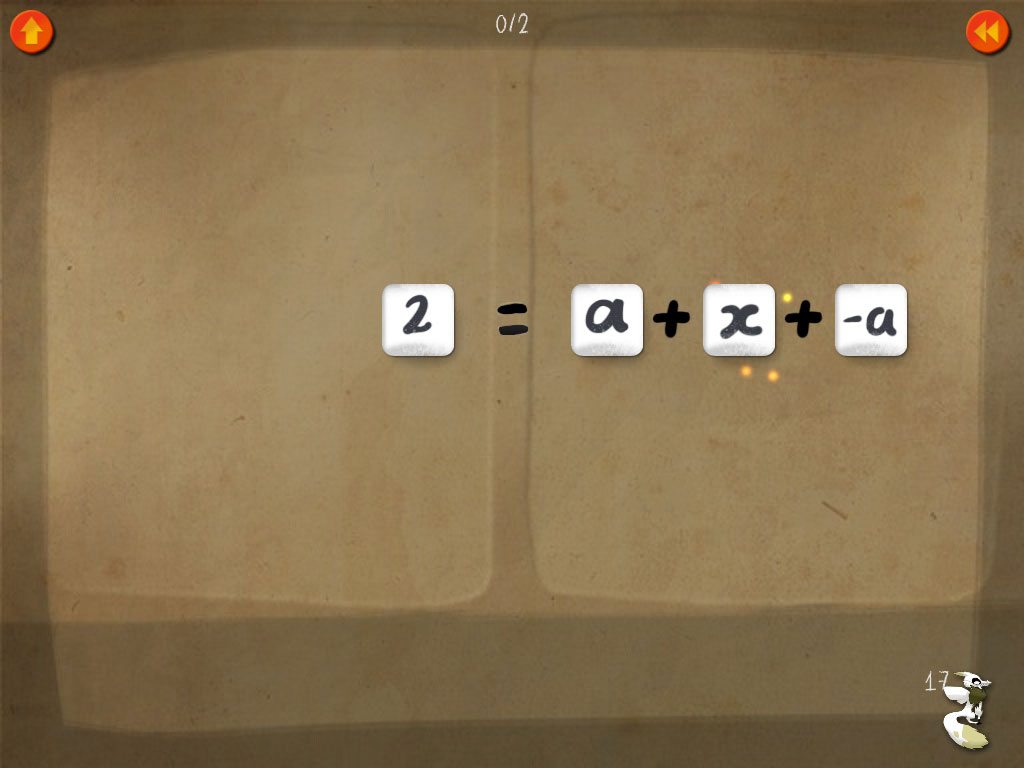
And then the cards once again turn into numbers and letters instead of little pictures… and then finally you get something like that screenshot near the top of the post, where the trays have faded out completely and there are just the hint of card outlines, and — voila! — you’re solving algebraic equations.
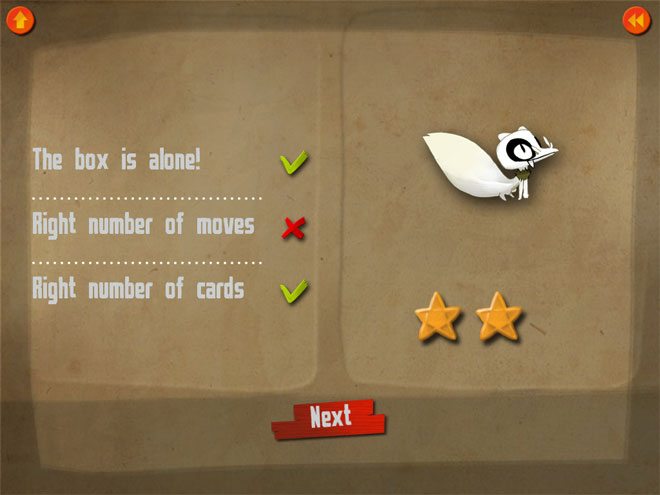
Aside from isolating the box, you’re also challenged to complete the level in as few moves as possible, which gets you a an extra star. You also get another star if you have the right number of cards at the end — that is, you’ve simplified the equation as much as possible.
